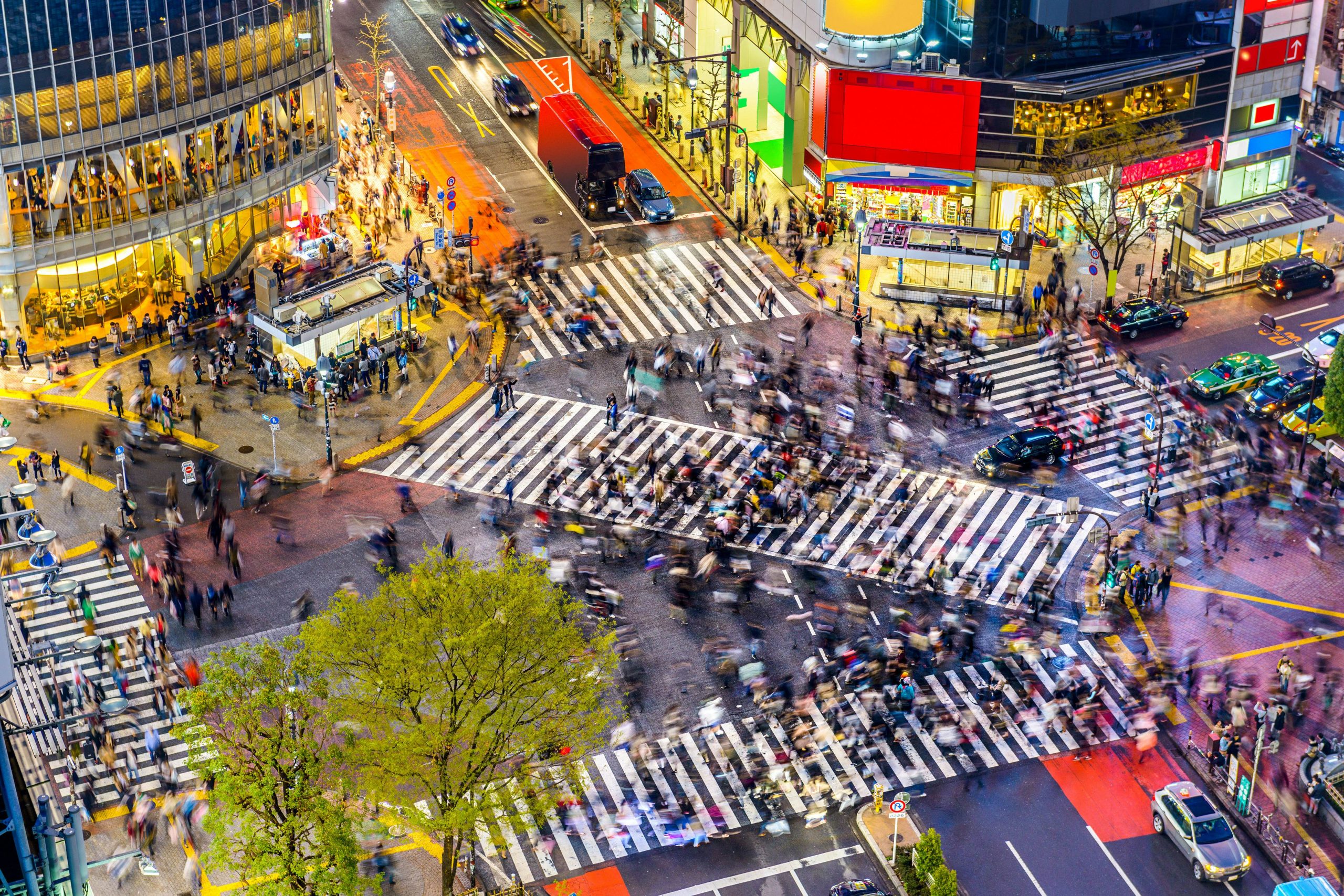From Tokyo to Shibuya Crossing: The Complete Guide for First-Time Travelers
Imagine yourself standing in the middle of the busiest pedestrian crossing in the world surrounded by neon lights, stylish residents, and the lively pulse of Tokyo. If so, you’re not alone. Millions of people visit Tokyo to Shibuya Crossing, one of the most famous sights in the city annually. Whether your trip to Japan is your tenth or your first, getting from Tokyo to Shibuya Crossing can be a little perplexing—especially when negotiating the maze-like Tokyo Station. Not to worry though; I have you covered. I will walk you through every pragmatic detail you need to know to get from Tokyo to Shibuya Crossing effortlessly and stress-free in this guide. We will look at the fastest paths, the least expensive choices, and even some unusual ones including cycling or walking. At the end, you will not only know how to get there but also be ready to completely enjoy the well-known crossing and vibrant Shibuya district surrounding it.
Why from Tokyo to Shibuya Crossing?
Let’s discuss the reasons behind this popularity of this trip before we get into logistics. For visitors—especially those arriving by Shinkansen (bullet train), airport limousine buses, or airport trains like the Narita Express—Tokyo Station is a main base. Conversely, Shibuya Crossing is a bucket list site. It’s a symbol of Tokyo’s dynamic energy, not only a pedestrian scramble. Up to 3,000 persons rush into the junction from all directions with every light cycle. Towering screens flash ads above, and the Hachiko Statue close by gives the scene sentimentality and history. From the center of Japan’s transportation hub to the heart of youth culture, the short but potent trip from Tokyo to Shibuya Crossing transports you.
How far Shibuya Crossing is from Tokyo?
About 6.5 kilometers—or roughly 4 miles—separate Tokyo Station from Shibuya Crossing. Your mode of transportation will determine how long the trip takes—between twenty and forty minutes. Depending on your travel style, budget, and time of day, there are several ways to get from Tokyo to Shibuya Crossing with benefits and drawbacks. Let’s examine every choice methodically.
Option 1: JR Yamanote Line—the most often used and easiest path

The JR Yamanote Line is the easiest approach, if you’re looking for from Tokyo to Shibuya Crossing.
Methodical Guide: Step-by-STEP JR Yamanote Line Taking Guide
- Beginning at Tokyo Station, Enter Tokyo Station and track JR Lines’ signage. See the green signs displaying the Yamanote Line (山手線). Connecting most of Tokyo’s main districts, including Shibuya, it’s a circular loop line.
- Either purchase a ticket or use an IC card. Just tap through the gate if you carry a Suica or PASMO card. If not, get a paper ticket from an English-language vending machine. Tokyo to Shibuya Crossing’s fare runs roughly ¥200 (about $1.30 USD).
- Get on the train headed Shibuya. Check that you are on a Yamanote Line train headed toward Ikebukuro, Shinjuku, or Shibuya. Trains pass every two to four minutes, so you won’t have to wait long. The Shibuya ride takes twenty-five minutes or so.
- Depart from Shibuya Station. Follow the Hachiko Exit signs when you arrive. You will thus straight forwardly find Shibuya Crossing.
Why Go This Way?
Perfect for first-time visitors and those with Japan Rail Pass (JR Pass), Pros include easy, frequent service and a picturesque ride through central Tokyo; Cons include can get packed during rush hour. For good cause, this path is by far the most often used one from Tokyo to Shibuya Crossing. Direct, reasonably priced, and with friendly signage for tourists.
Option 2: Tokyo Metro—a somewhat faster but less direct choice
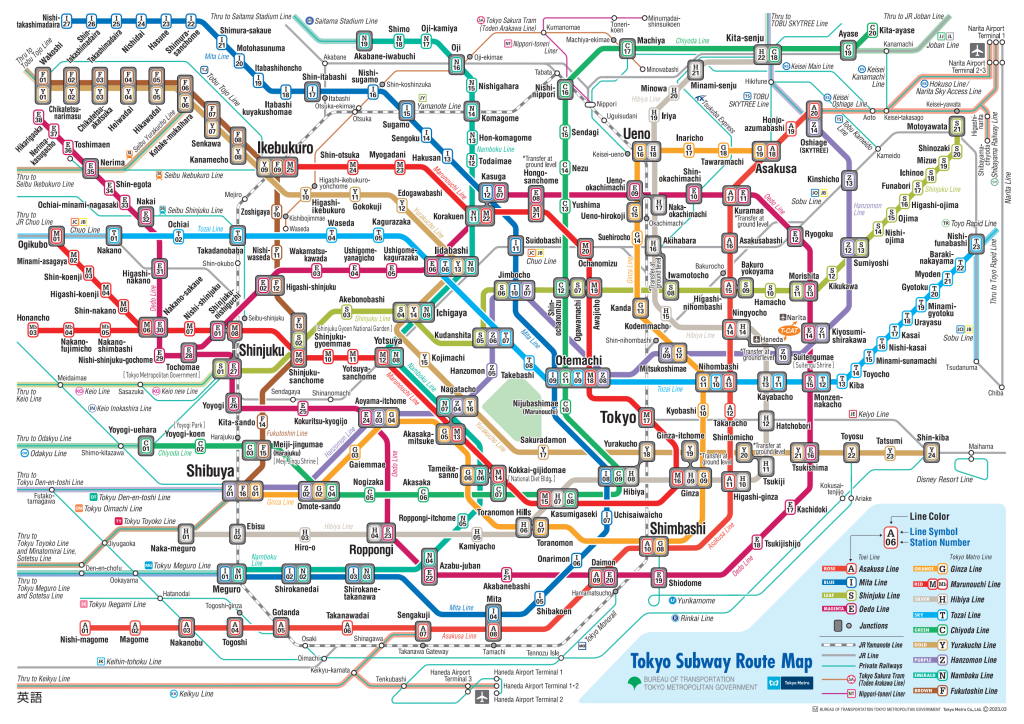
The Tokyo Metro line could be a great substitute if you wish to avoid JR stations or are on rush hour.
Comprehensive Guide: Step-by-Step Guide
How to get Shibuya Crossing using Tokyo Metro?
- Within Tokyo Station, locate the Marunouchi Line. Follow the red indicators designated Tokyo Metro Marunouchi Line (M). Running across central Tokyo, this line links to the Ginza Line at Akasaka-Mitsuke.
- Purchase a ticket or credit your IC card. Tokyo Metro tickets run about ¥240 (about $1.60 USD). For seamless access, use an IC card.
- Travel to Akasaka-Mitsuke Station. Board the Marunouchi Line headed for Ogikubo and exit at Akasaka-Mitsuke Station (about seven minutes).
- Proceed to the Ginza Line. Transfer to the Ginza Line (G) toward Shibuya following the orange signs. Though some walking between lines is necessary, the platforms are well marked.
- At Shibuya Station, arrive. It will take the Ginza Line roughly fifteen minutes to get Shibuya. Exit once more via Hachiko Exit to view the crossing.
Why Go This Way?
- Pros: In some cases slightly faster; good for avoiding JR congestion
- Cons: one transfer required, somewhat more walking inside stations
- Ideal for those wishing to avoid JR crowds or those with Metro-only passes
Although this isn’t the most direct way from Tokyo to Shibuya Crossing, if you already have a Tokyo Metro pass or during peak JR hours it can be a wise decision.
Option 3: Taxi—comfortable but expensive.
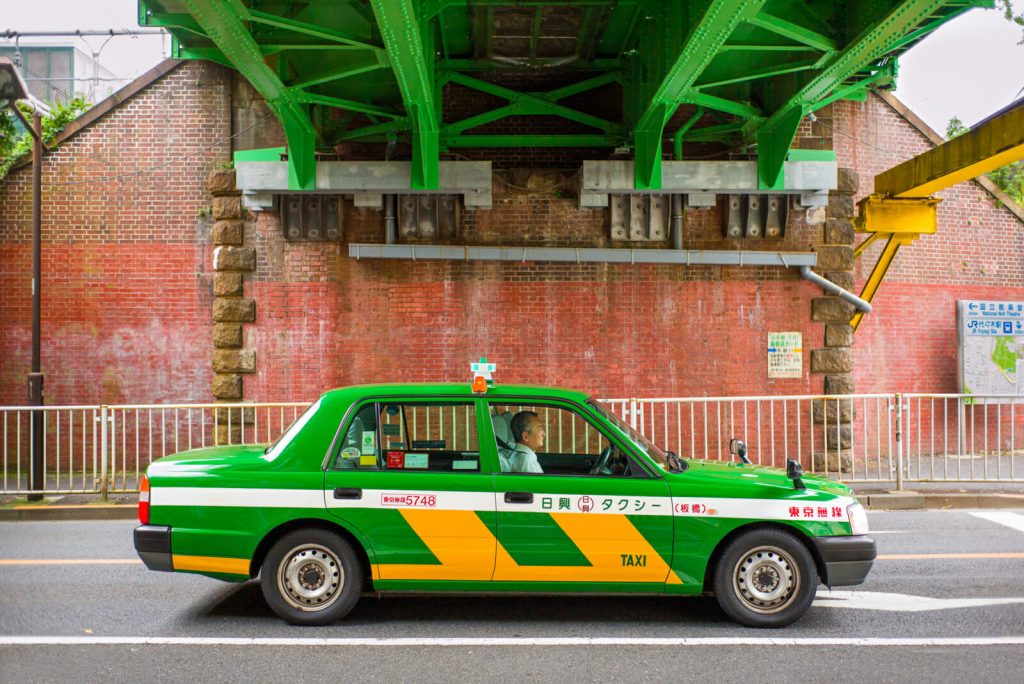
If your main concern is comfort or you are late at night and you need to get from Tokyo to Shibuya Crossing straight, a taxi can do.
Taxi Taking Guide: How to Get About
- Outside every main exit at Tokyo Station are taxi stations.
- The ride takes 20–40 minutes, depending on traffic;
- Fares usually run ¥2,500–¥3,000 (about $17–$20 USD). Just say “Shibuya Station, Hachiko Exit” or show it written in Japanese.
Advantages and disadvantages
- Cons: Expensive, slower during peak traffic
- Pros: Door-to-door comfort, no transfers, luggage-friendly
- Perfect for groups, families with young children, or late night arriving travellers.
Option 4: Bus – Uncommon but Possible
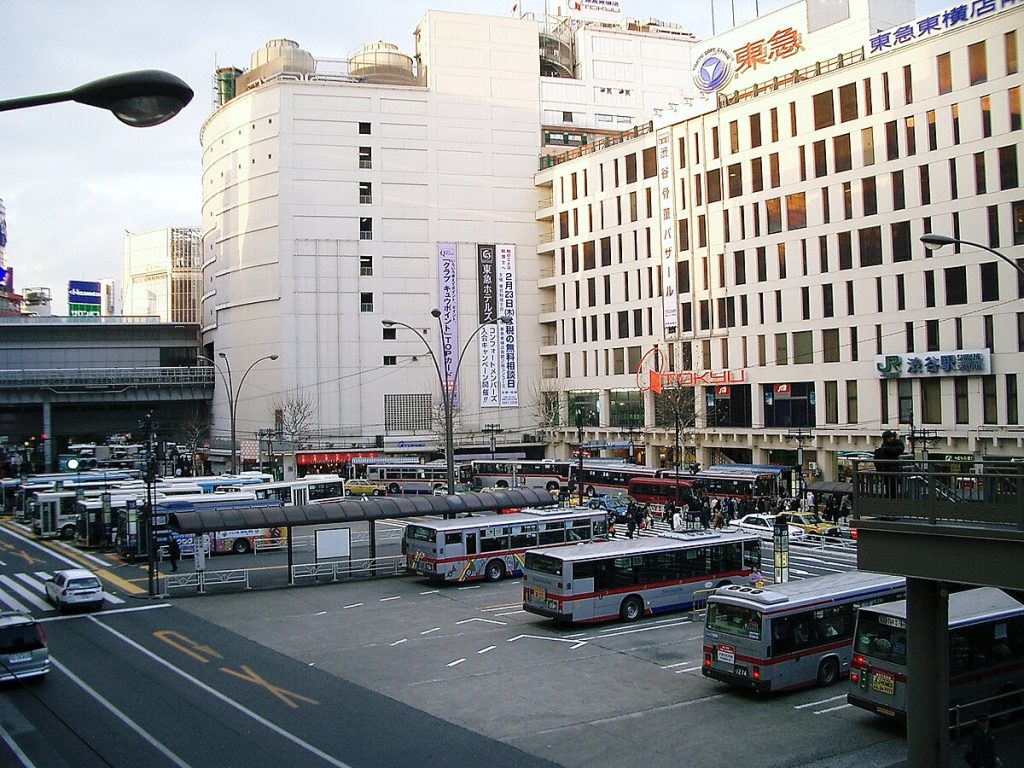
There are a few highway and local buses that travel between central Tokyo and Shibuya, but this method is the least recommended for tourists heading from Tokyo to Shibuya Crossing.
What to Expect
- Local buses may require Japanese language knowledge
- Routes may involve transfers or stops far from Shibuya Station
- Longer travel time (40 minutes or more)
- Not cost-effective compared to trains
Verdict
Skip this option unless your accommodation happens to be near a convenient bus route. Otherwise, trains are much faster and easier.
Option 5: Walking – For the Urban Explorer
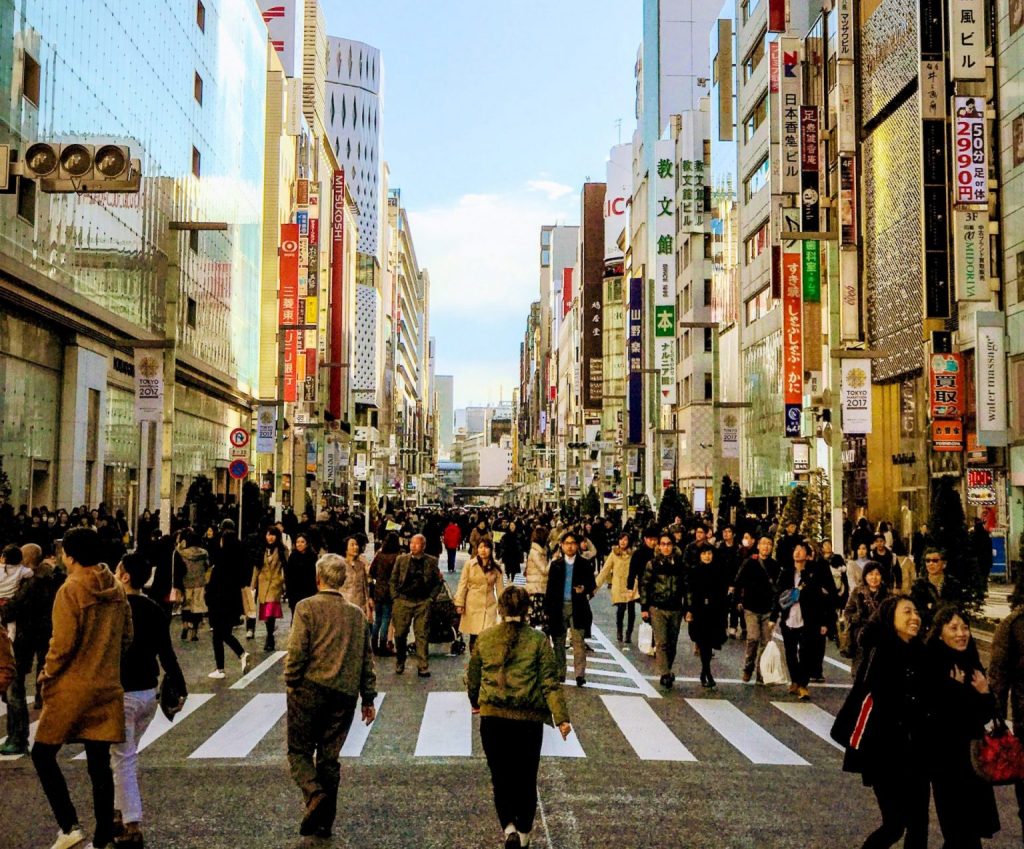
Are you a fan of urban adventures? Then walking from Tokyo to Shibuya Crossing might be an unforgettable experience.
Walking Details
- Distance: About 6.5 km (4 miles)
- Time: Around 1.5 hours
- Path: Walk west through Marunouchi, Aoyama, and Omotesando
- Highlights: Beautiful architecture, local shops, and cafes
Walking isn’t practical if you have luggage or are short on time, but it’s a unique way to experience Tokyo’s diverse neighborhoods. If you’re someone who enjoys slow travel, you might enjoy this stroll far more than a subway ride.
Option 6: Cycling – A Fun and Flexible Option
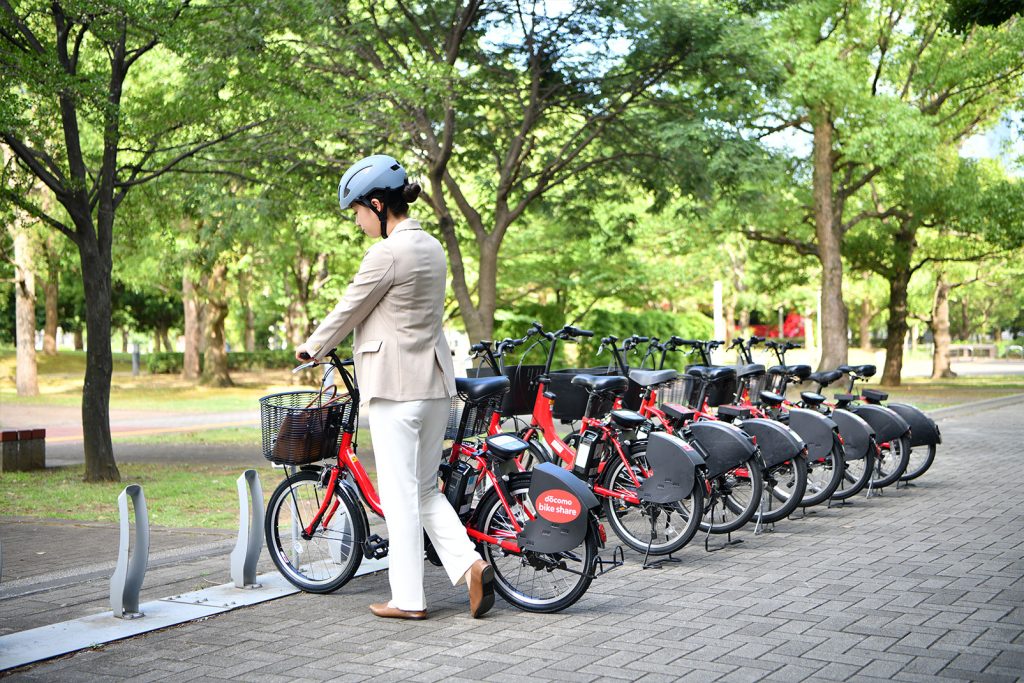
Tokyo is a surprisingly bike-friendly city. Going from Tokyo to Shibuya Crossing by bicycle lets you soak in the scenery while avoiding crowds.
How to Rent and Ride
- Use bike-sharing services like Docomo Bike Share or Hello Cycling
- Rentals cost about ¥150–¥200 per 30 minutes (~$1–$1.30 USD)
- Helmets aren’t required by law but are recommended
- Park only in designated areas (near Shibuya Station you’ll find a few)
- Travel time: 25–30 minutes
Just make sure to check the return station availability near Shibuya before starting your ride.
Comparing All Your Options: The Ultimate Tokyo to Shibuya Crossing Cheat Sheet
With so many ways to go from Tokyo to Shibuya Crossing, how do you choose the best one? It depends on what you value most—time, cost, comfort, or convenience. Here’s a comparison chart to help you decide.
| Mode of Transport | Travel Time | Cost (USD) | Comfort Level | Availability |
| JR Yamanote Line | ~25 minutes | ~$1.30 | ★★★★☆ – Generally clean, might stand | Every 2–4 minutes |
| Tokyo Metro | ~20–25 minutes | ~$1.60 | ★★★★☆ – Slightly crowded at peak times | Very frequent |
| Taxi | 20–40 minutes | ~$17–$20 | ★★★★★ – Private, direct, door-to-door | 24/7 availability |
| Bus | 40+ minutes | ~$2–$3 | ★★☆☆☆ – Less clear, less convenient | Less frequent, local stops only |
| Walking | 90–120 minutes | Free | ★★★☆☆ – Physically demanding, scenic | Always possible |
| Cycling | ~30 minutes | ~$1–$5 | ★★★★☆ – Scenic and flexible | Daytime rentals available |
Which Option Is Best?
- If you’re in a rush or visiting for the first time, go with the JR Yamanote Line—it’s simple, frequent, and takes you straight from Tokyo to Shibuya Crossing.
- If you’re navigating the city like a local and want to avoid JR crowds, the Tokyo Metro route is efficient and well-connected.
- For comfort and convenience, especially at night or with luggage, a taxi might be worth the price.
- If you’re in the mood for adventure or want to explore on the way, walking or biking opens up a whole new view of Tokyo.
No matter which route you choose, the journey from Tokyo to Shibuya Crossing is an essential part of experiencing Tokyo itself. It’s more than just a trip—it’s a peek into how this vast, modern city keeps moving with precision and energy.
What Should You Do Arriving at Shibuya Crossing?
Congratulation for getting from Tokyo to Shibuya Crossing! Now is the time to savor the thrill of one of the most often photographed locations on Earth. Shibuya is more, though, than just its well-known crosswalk. Once you arrive, here are some things to do, eat, and encounter.
1. Observe the crossing from above.
Crossing the street is indeed enjoyable. Better still, though, is seeing it from above. Go right across from the junction to the second floor Starbucks at Shibuya Tsutaya. This is a preferred viewing location; if you choose a window seat, the turmoil below will be perfectly seen from all sides. Alternatively, go up to the Shibuya Sky Observation Deck at the top of Shibuya Scramble Square. The open-air deck offers sweeping views of Tokyo—on clear days, you might even spot Mt. Fuji!
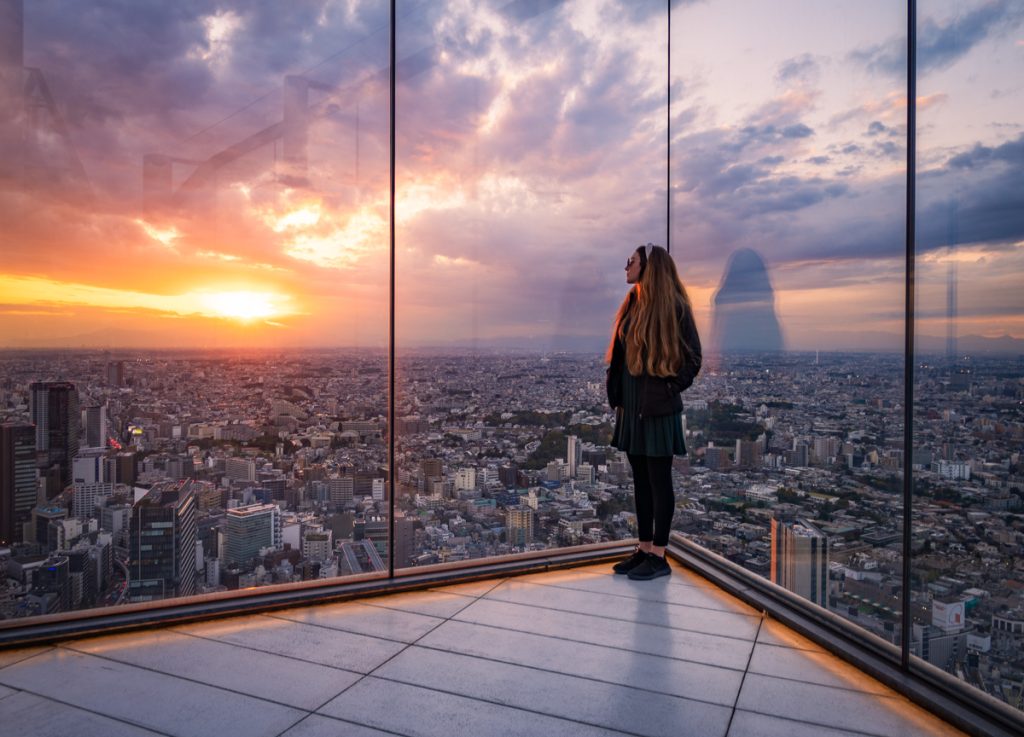
2. Hello Hachiko
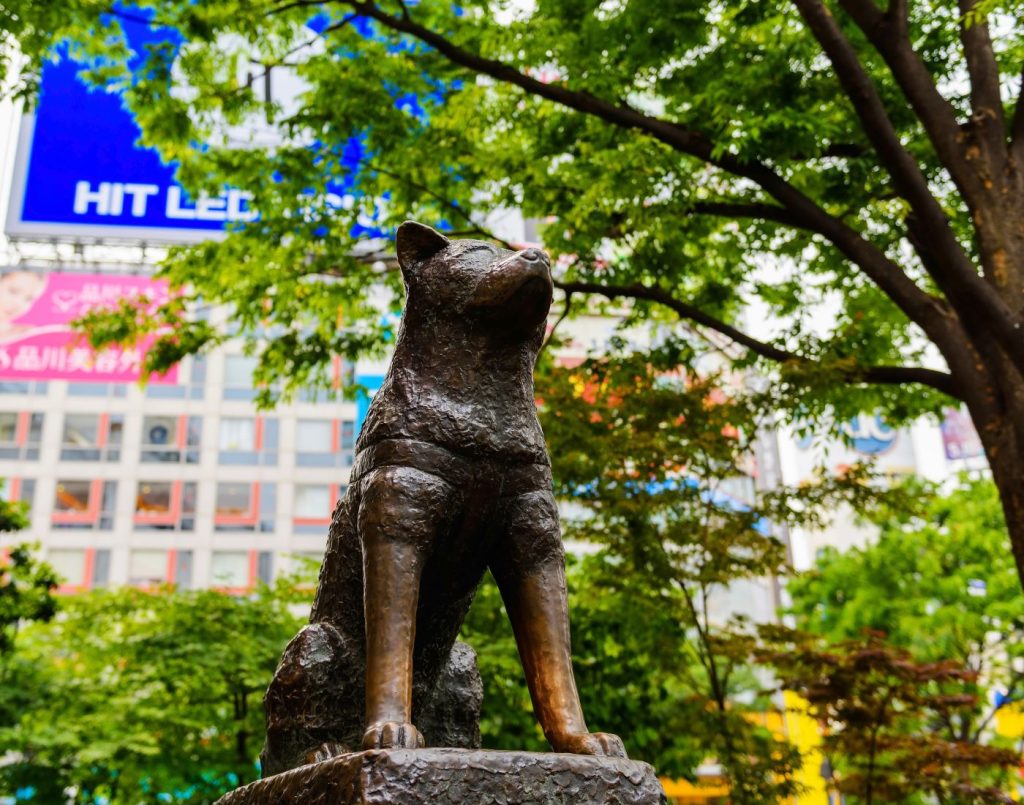
The Hachiko Statue, a little bronze memorial of the famously devoted dog who waited daily for his owner—even after the owner died—just outside the Hachiko Exit. In Japanese society, this is a common gathering place, picture point, and touching emblem of loyalty.
3. Get a Bite Closeby
You most likely need some fuel after your trip from Tokyo to Shibuya Crossing. Here are some choices based on your attitude:
- Uobei Sushi (Genki Sushi Group) is a futuristic sushi restaurant whereby food flies to you on conveyor belts.
- Ichiran Ramen, noted for its rich tonkotsu broth and solo dining booths, The branch close to Shibuya is open twenty-four-hour!
- Harajuku Gyoza Lou: For reasonably priced crispy pan-fried dumplings, be ready to walk a little towards Harajuku.
- Rooftop Bar from Stream Design Would you like a drink overlooking? This hip rooftop location lets you relax while seeing the city hum below.
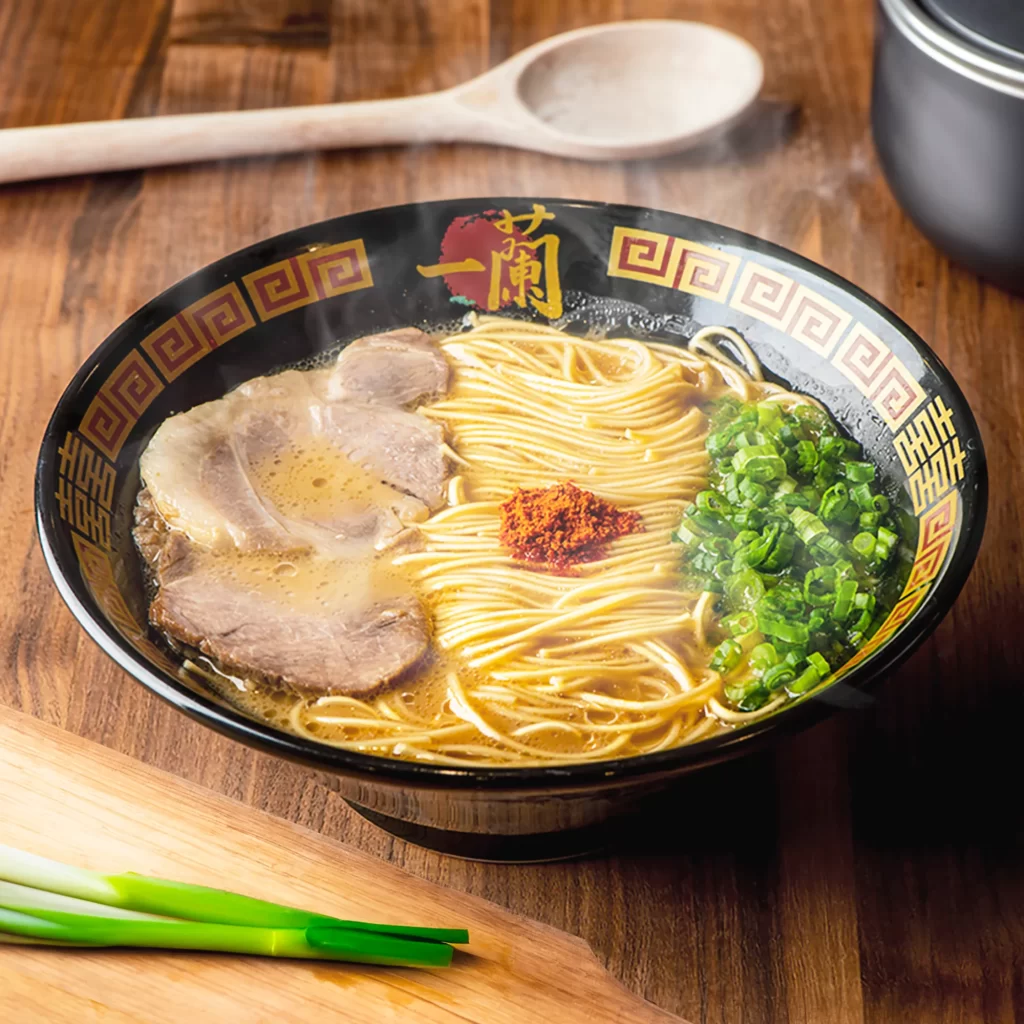
4. Shop Till You Drop
Fashion-forward Shibuya is where local street style meets world trends. Shibuya 109 is iconic for young women’s fashion.
- Don Quijote, a multi-floor discount megastore offering practically everything—from cosplay clothing to beauty products.
- LOFT – Perfect for oddball Japanese gifts, stationery, and mementos.
The retail therapy here is first-rate whether your goal is to overhaul your wardrobe or window-shopping.
5. Investigate Surrounding Communities
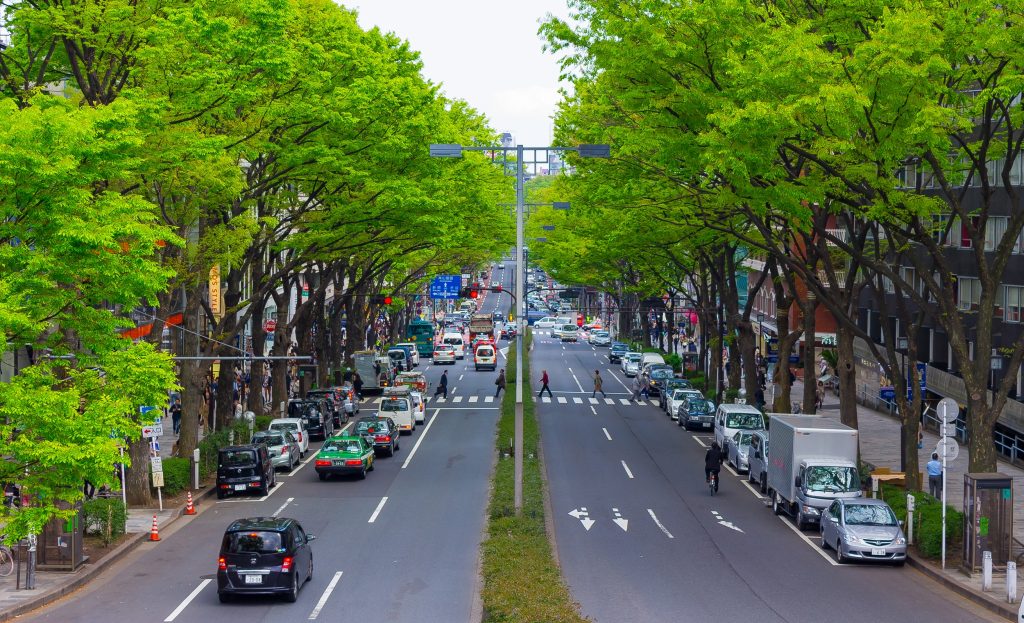
Once Shibuya Crossing has been checked off, stroll or ride a train to these surrounding attractions.
- Harajuku, noted for its vivid young fashion and Takeshita Street.
- Omotesando is a more elegant, tree-lined boulevard dotted with designer stores and cafes.
- Daikanyama – Chill area featuring chic boutiques, brunch cafes, and independent bookstores.
Your path from Tokyo to Shibuya Crossing can start a whole day of discovery instead of stopping there.
Local Travel Advice for Your Trip
Let’s review your choices for getting from Tokyo to Shibuya Crossing and exchange some additional travel tips.
- Best for simplicity: cheap, direct JR Yamanote Line
- Tokyo Metro combo (Marunouchi + Ginza Lines) best for avoiding throngs.
- Most suited for comfort: taxi
- Ideal for discovery: biking or walking.
The objective is the same regardless of your path: to reach Shibuya Crossing without incident so you may savor one of Tokyo’s most vibrant and unforgettable sites.
Suggestions for Travel
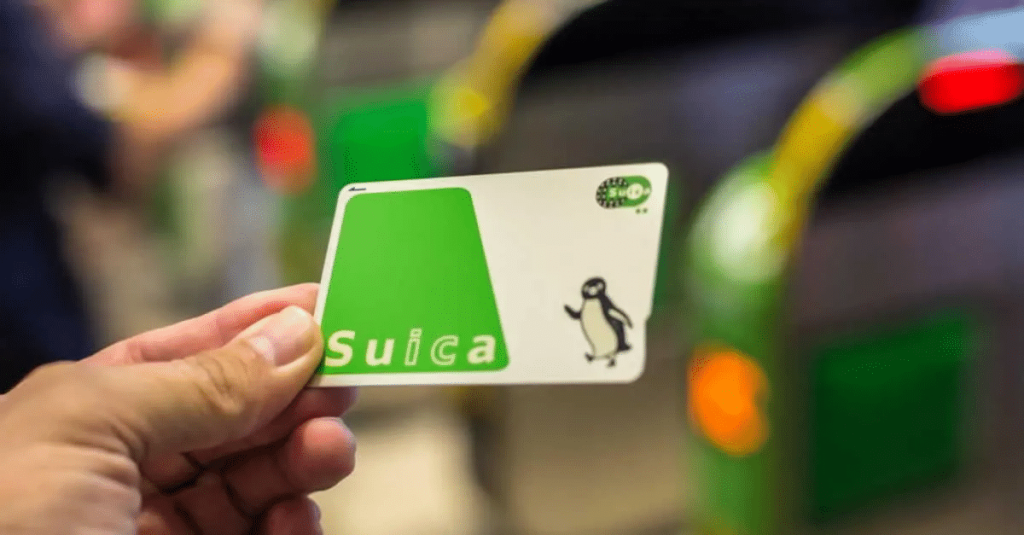
- Steer clear of lining up for tickets every trip by using an IC card such as Suica or PASMO. Both JR and Metro systems accept these cards.
- Download a transit app like Google Maps (in Tokyo, it’s rather dependable) or Japan Travel by Navitime.
- If you wish a less packed train ride, avoid peak hours (7:30–9:30 am and 5:00–7:00 pm).
- Keep left on platforms or escalators; Tokyoites follow the guidelines.
- Spend some leisure time in Shibuya. Though this is a fast-paced field, there is so much hidden in upper levels and side streets that call for leisureful discovery.
One Trip, Countless Memories
From Tokyo to Shibuya Crossing is a journey across the pulse of a city never stopping, not just a subway ride. Starting in Tokyo Station’s calm, orderly hallways, you will wind your way towards Shibuya’s brilliant mix of neon, music, and energy. Among the most interesting short trips Tokyo offers is this one. Whether your stay is short or longer, make sure you mark this trip. It is full of character, quick, and easily available. So take your IC card, charge your camera, and enter one of the most famous urban scenes on Earth. Because no trip to Tokyo is really complete without that moment in the middle of Shibuya Crossing—where, for a moment, you are part of the history of the city.
